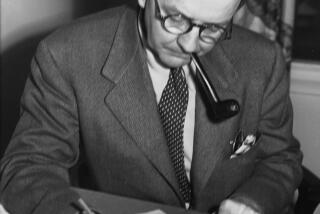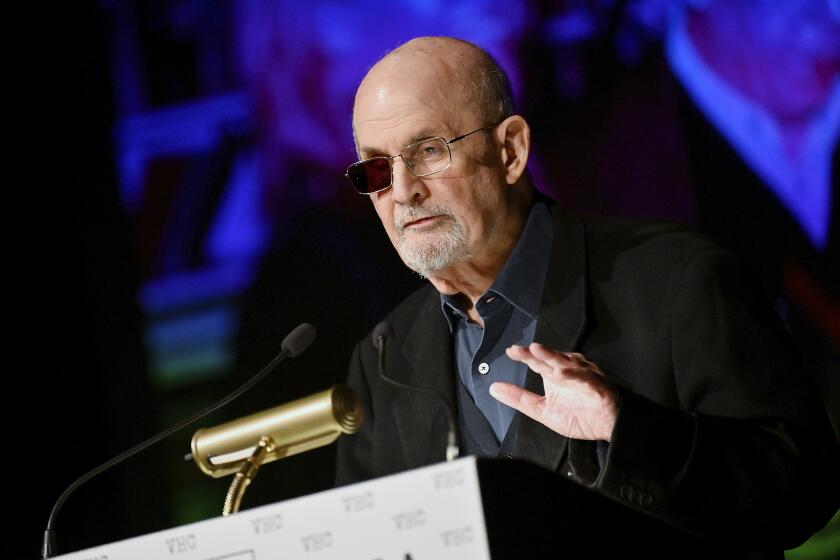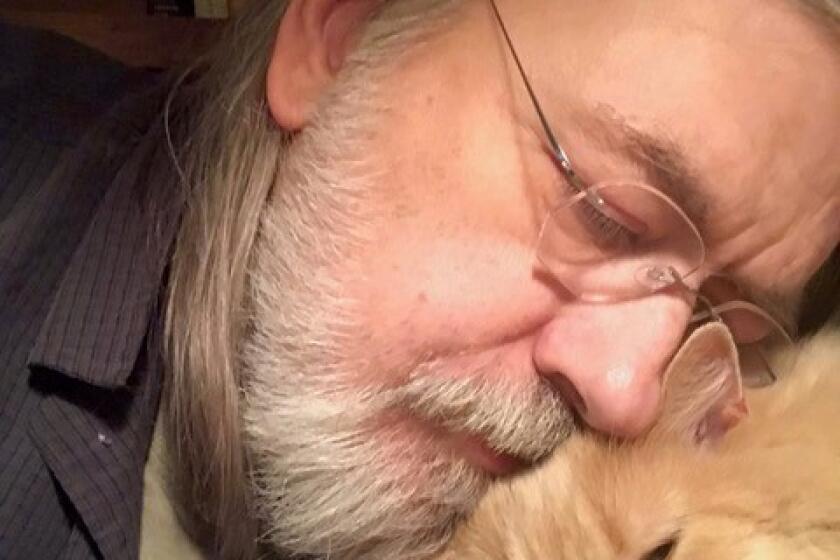Kim Cooper on ‘The Kept Girl,’ her 1920s L.A. noir
Kim Cooper is steeped in L.A. history. With her husband, she runs the cultural bus tour service Esotouric, which takes people to the curious and criminal places of Los Angeles’ past. Some of their tours are specifically literary, following James M. Cain and Raymond Chandler through their lives in L.A. and the fictions they wrote here. Cooper, who has written books before (she helped her grandmother write “Fall in Love for Life” and is the author of the 33 1/3 book about Neutral Milk Hotel, “In the Aeroplane Over the Sea”) found the true stories from those tours to be inspiration for her debut novel, “The Kept Girl.” In the book, set in 1929, the Great Eleven religious cult has persuaded a wealthy young man to part with $40,000; his uncle enlists his company accountant to try to get the money back. That accountant is none other than Chandler, who investigates with the help of his secretary and a former police detective. Cooper reads from the book Thursday at Skylight Books at 7:30 p.m.
Novelist Raymond Chandler is one of the narrators of “The Kept Girl.” Why did you choose him to help tell your story?
I first told the true story of the Great Eleven cult on my husband Richard Schave’s Raymond Chandler bus tour, because its leaders were accused of defrauding the nephew of Chandler’s boss at the Dabney Oil Syndicate.
There are so many real people and crimes in Chandler’s fiction that I would introduce the story by saying, “Raymond Chandler made nothing up, but unfortunately he never wrote about this weird incident at work.” Then one day I thought, “Wouldn’t it be fascinating if he HAD written about the cult?” And I jumped off from there.
When your characters visit places like “the Good Fellows Grotto, that venerable oyster house beloved by the city hall crowd,” are they moving through historic Los Angeles?
They sure are. It was important to me that, while the book is a novel, it be a truthful representation of the real people and places that figure in the story.
Good Fellows Grotto was located at 4th and Main, between the Follies Burlesque and the Van Nuys Hotel, where Chandler sets one of the ice-pick murders in “The Little Sister.” Its slogan was “The Restful Charm of the ‘Gay Nineties’ in the ‘Atomic Fifties.’ ” I’m sort of obsessed with the place, because it sounds completely perfect, yet for some unknown reason the city code enforcers came down like a hammer over the Christmas holidays in 1952. The owners shut it down, the pretty little building was razed, and it’s now a parking lot.
In the book, Chandler has a secretary, Muriel Fischer, inspired by his real secretary, Dorothy Fisher. You met her. What was she like?
Dorothy was a smart, funny, self-effacing, tough-as-nails broad with a deep strain of sentimentality and fascinating Hollywood stories she enjoyed sharing. She was delightful company; I miss her.
Can you tell me about Tom James, another major character in the novel?
Kentucky-born Tom James was an idealistic Los Angeles cop who lost a plum position as Mayor Porter’s personal Police Commission investigator because he spoke out about corruption, apparently not realizing the rot went all the way to the top. He was demoted to a busy beat at 7th and Broadway, where he made headlines telling citizens their police chief was dirty. Fired for insubordination, in 1931, he self-published a muckraking pamphlet, which is an astonishing document.
Tom James is also one of a small group of Los Angeles law enforcement figures whose careers and character seem likely to have inspired Chandler’s detective Philip Marlowe.
The mystery circles around the Great Eleven, a religious cult whose activities were quite unusual. Were you ever concerned that the story might be too strange for fiction?
On the contrary, when writing about some of their more outrageous antics, I found myself resisting the urge to reign it in. It would not have been truthful to make them milder.
Does 2014 Los Angeles share anything with 1929 Los Angeles?
It takes a pretty big scandal to convince an incumbent Los Angeles County sheriff to resign.
What are some of your favorite detective novels set in L.A.?
Dorothy B. Hughes’ “In a Lonely Place,” James M. Cain’s “Double Indemnity,” with that terrifying ending, Chandler’s “The Little Sister” and, for nonfiction sleuthing, Ed Sanders’ “The Family.”
You published “The Kept Girl” with your own press, Esotouric Ink, in e-book and paperback, and also in subscription model. Could you explain that strategy?
We’re blessed to have a devoted fan base that attends all our tours and cultural salons. We realized that we could tap into this goodwill to help launch our imprint, while at the same time creating a beautiful handcrafted object that our fans would treasure. We could also offer our supporters an experience.
The paperback is an ordinary book -- though very handsomely printed by the century-old Los Angeles firm Tower-Lee and with a gorgeous cover by Paul Rogers -- but for the subscribers, whose names are printed in every copy, it comes wrapped in limited-edition textured Art Deco wraps inspired by the doors of the William Fox Building on Hill Street downtown. We’ll be going to those doors, and a number of locations that feature in the novel, on the walking tour that’s part of the subscribers’ appreciation event in April.
ALSO:
George Packer on writing about Amazon
The intimate unseen Beatles photographs of Bill Eppridge
Jesse Eisenberg to publish a book of short fiction with Grove
Carolyn Kellogg: Join me on Twitter, Facebook and Google+
More to Read
Sign up for our Book Club newsletter
Get the latest news, events and more from the Los Angeles Times Book Club, and help us get L.A. reading and talking.
You may occasionally receive promotional content from the Los Angeles Times.







